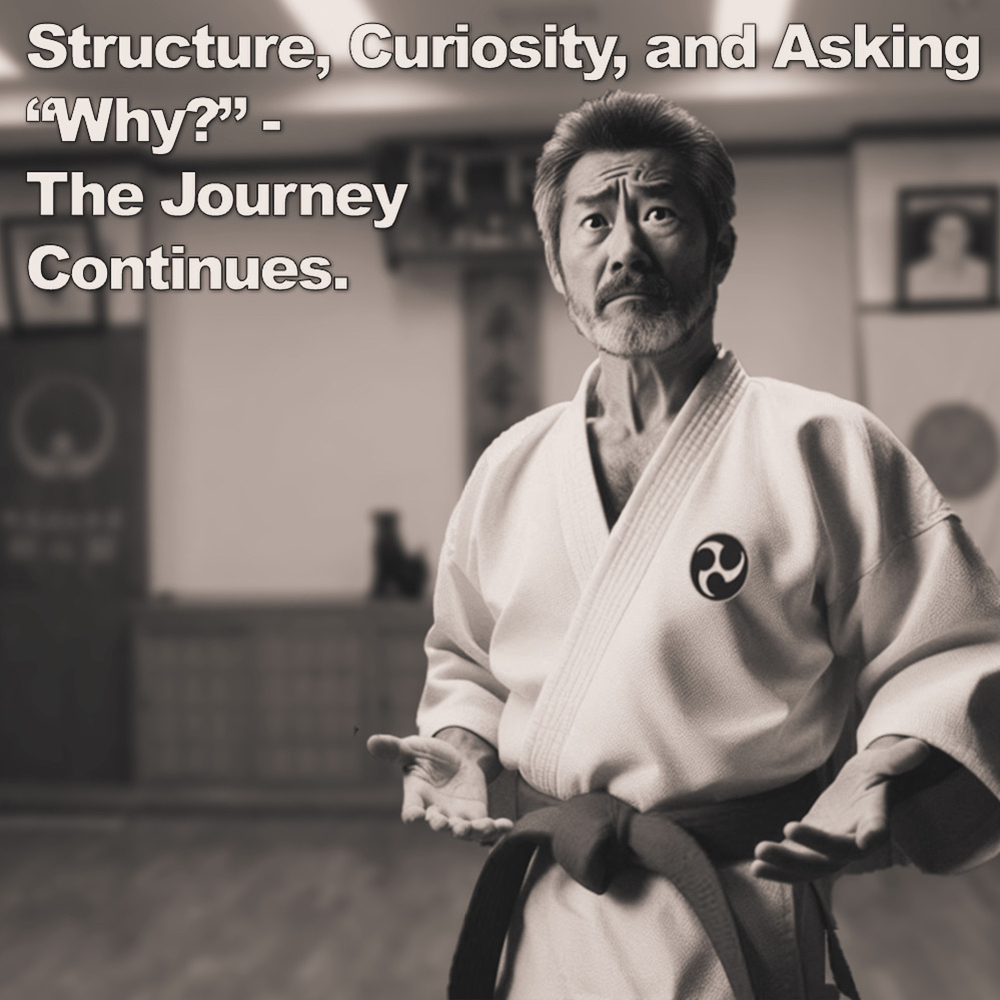
(Approx 2 minute 45 second read)
When you are inexperienced in the martial arts, or anything really, there comes a point in time where you start asking questions. Some will question themselves, others will ask questions of their instructor, or someone outside their dojo or association. You may not get the answers you were looking for of course.
.
The process that the Japanese call ‘Shu-Ha-Ri’ (守破離) is a way to think about the levels of learning that you progress through as you gain knowledge and proficiency through practice.
.
“Shu” (守): literally means “to obey,” “keep intact,” or “protect.” This is the stage of learning where you follow and mimic your instructors. You focus on doing the task without questioning the “why.” You follow your instructor’s teachings, and memorize the information that’s being presented to you to build a solid foundation.
.
“Ha” (破): literally means “to detach,” “let go,” or “break away.” In this intermediate stage, you begin to think for yourselves. This is perhaps where those questions begin, and you start seeking answers. You gain knowledge of the “why” and start integrating what you’ve learned into your practice. This is often a challenging phase because it involves letting go of certain ideas ingrained during the ‘Shu’ phase. Many practitioners remain in this stage because it’s difficult to break away from their instructors or styles fundamentals.
.
“Ri” (離): literally means “to leave,” “go beyond,” or “transcend.” At this stage, you are no longer learning from your instructors – you’re learning from your own experience. You’ve absorbed what was passed down to you, broken free from those boundaries, and now you are able to adapt what you’ve learned to your own unique circumstances.
.
You finally make karate your own!
.
But this doesn’t mean you’re abandoning tradition. It’s about evolving beyond the constraints of rigid imitation to find what works for you. It’s important to challenge your old ways of thinking and practicing to make room for new insights. You have to acknowledge that what you know and how you’ve been doing things may not always be the best solution.
.
So many of the comments on my articles state that “My instructor told me this”, or, “The way I was taught is like that”. And I understand – many of you may have high-ranking instructors whom you respect greatly. You don’t want to contradict them. You show them courtesy and respect, and that’s important. I get it.
.
But even in the presence of great teachers, there comes a time when you need to ask: Why? If you’re happy with your method of karate, that’s fantastic! There’s no need to go beyond ‘Shu’ if it serves you well. As long as you understand that there are other ways, that’s what’s most important.
.
When you first start learning something, a variety of ideas isn’t always the most helpful place to begin. You need structure. Once you’ve built the right kind of foundation for your goal and context, that’s when you can start experimenting and trying different things.
.
There is no yellow brick road leading you to mastery – no simple path someone can show you. Walking this path requires hard work. When I began karate in the 1970s, I was in awe of the Japanese and Okinawan sensei who came to the UK. Their skill level and the way they commanded the room were something to aspire to.
.
I was often told to just shut up and train, because in Japanese society it’s often seen rude to question elders. And when I did get some answers, they didn’t always make sense. But I accepted them, as most instructors – Japanese or otherwise – taught in a similar way. It was as though questioning the status quo was frowned upon.
.
To truly understand anything, though, you must have an open mind and an insatiable curiosity. In the end, that’s the only way to really learn. So, go on, ask your instructor ‘why?’
.
.
Written by AC.
